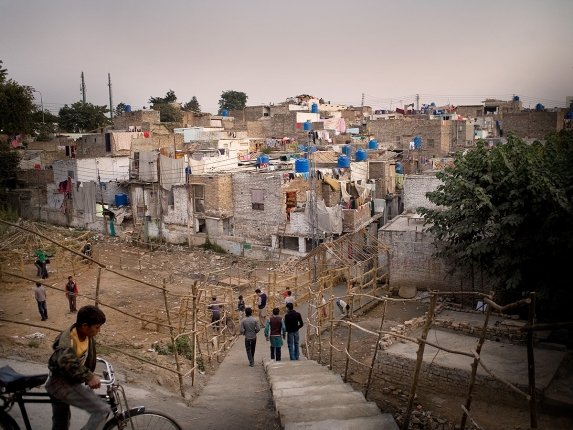Slum dwellers demand protection of homes
Islamabad: With clouds of uncertainty looming over their heads, residents of Rishma Colony, H-9 have called upon authorities the protection of their homes to be affected by the 10th Avenue project, by recognizing them as stakeholders in the project.
Concerned residents along with the members of Alliance for Katchi Abadis and Awami Workers Party (AWP) attended a public hearing held by the Capital Development Authority (CDA) and the Environmental Protection Agency (EPA) at Jinnah Convention Center on the environmental impact assessment report for the 10th Avenue project on Thursday.
They called on the CDA to recognize the katchi abadis 20,000 residents as stakeholders in the realigning of the project to ensure that their homes were not affected by its construction.
Following the presentation by the EPA on the project, residents, academics, activists, and members of civil society participated in the question-and-answer session to voice concerns regarding the project and its impact on communities.
Academic and activist Dr Aasim Sajjad Akhtar said that it was ironic that plans had been made for resettling trees and buildings in the way of the road but the residents of a directly affected community had not even been consulted before starting work on the project.
He said that the EIA report simply referred to the abadi’s 20,000 residents as encroachers and had made no mention of what would become of their homes. He said the report should reflect the fact that it was the CDA and the Islamabad administration themselves who settled the abadi’s residents in H-9 following threats of mob violence in Mehrabadi in 2012.
He said the residents of Rimsha Colony should be included as stakeholders in the implementation of the project.
Speaking on the occasion, Rimsha Colony resident Waris Masih said that the residents of Rimsha Colony had built their homes with their hard-earned money and with the approval of CDA’s officials over many years. He said it would be extremely difficult for them to make ends meet if they were relocated to a place far away from their places of work. He called on the project planners to consider realigning the H-9 section of the project to ensure people could continue to keep their homes and livelihoods intact.
In response to an official questioning, about the legality of the colony, Rimsha colony resident and social activist Asma Salamat said that the working-class residents of Rimsha colony had helped build the city yet were declared illegal when they asked for their rights.
She said that the residents of the colony were not opposed to the road being constructed but wanted the recognition of their rights as guaranteed in the constitution. She said that people in the community were in a state of disbelief and insecurity about what would become of their homes and authorities had not even made any attempts to contact them.
Speaking on the occasion, AWP’s Alia Amirali said that there was ample unoccupied space next to the Rimsha colony that could be utilized for the purpose of constructing the road. Given the massive human, economic and social costs involved in resettling the residents to a distant location, it would make much more sense for the road to be realigned in sector H-9 by utilizing the empty land in proximity to the settlement. She said that the project should also take into account Supreme Court injunctions barring the demolitions of people’s homes in katchi abadis constructed before 2015.
Urban planner Ayesha Shahid said that the project’s goals were not aligned with the National Transport Policy of Pakistan and planners had not considered alternatives to the avenue’s construction in the environmental impact assessment.
She said that the study had failed to take induced traffic into account and failed to take into account the fact that the project would increase the use of motorized transport in the area, which would also increase air and noise pollution in the area and put greater stress on groundwater levels. She said that alternatives to the project should be considered that minimized the social and environmental impact and encouraged non-motorized transport in the area.
Officials of CDA and EPA said that the residents’ concerns would be taken into account and CDA would form a committee to engage with the residents to find a solution to the matter.

The High Asia Herald is a member of High Asia Media Group — a window to High Asia and Central Asia

